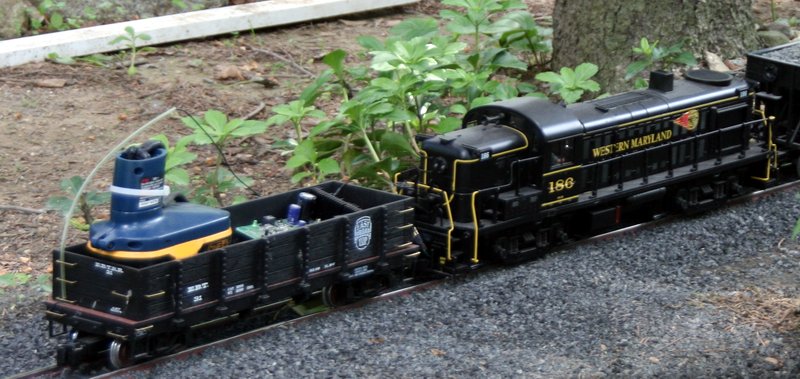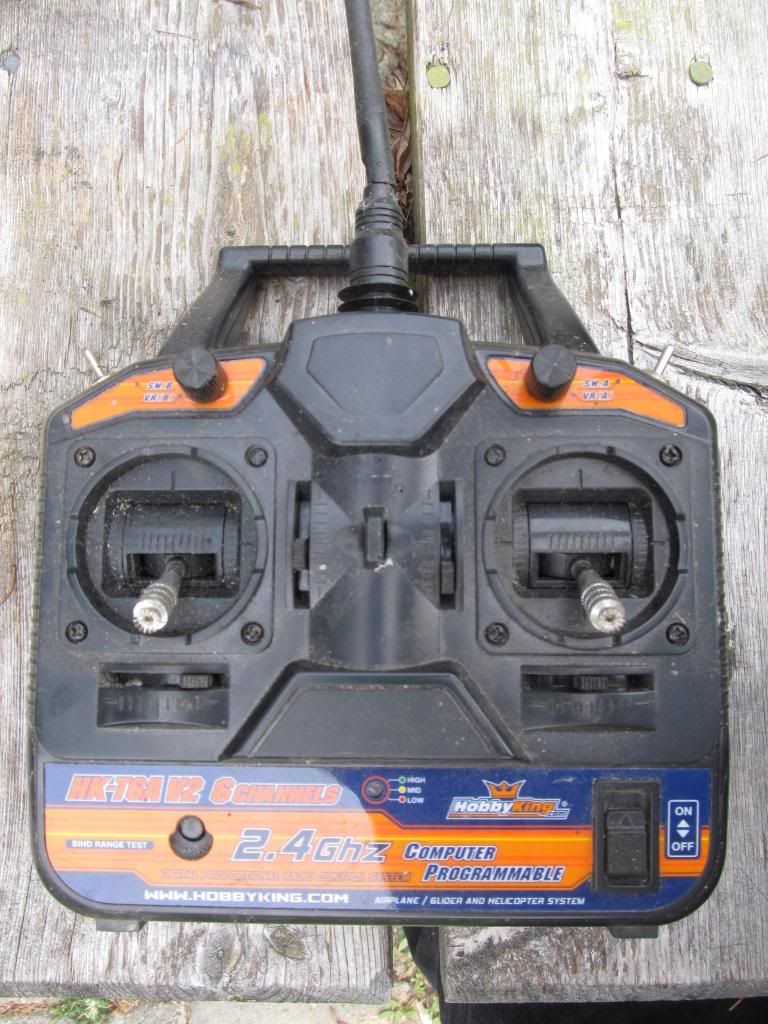Being a newb and ready to buy track. It’s hard to read all this info here and other boards and not have a clear direction which way to go. I–someday–plan to go battery but might need to start with track power. I plan to have raised track on ladder, but who knows. It’s just hard.
Matt Kerr said:
Being a newb and ready to buy track. It’s hard to read all this info here and other boards and not have a clear direction which way to go. I–someday–plan to go battery but might need to start with track power. I plan to have raised track on ladder, but who knows. It’s just hard.
Matt,
I don’t think there is a clear direction - it’s all an individual decision. I used code 250 brass on my layout, but aluminum would have worked out just fine as I am on battery power. Like you, I had PLANNED to start with track power, but ended up starting with battery instead. It’s been better than I could have imagined.
Is there any one in your vicinity that you can talk with?
Matt Kerr said:
Being a newb and ready to buy track. It’s hard to read all this info here and other boards and not have a clear direction which way to go. I–someday–plan to go battery but might need to start with track power. I plan to have raised track on ladder, but who knows. It’s just hard.
Matt, you need to write down your “Givens and 'Druthers,” the “Givens” being those things that you MUST have, and the " 'Druthers" being those things that you would LIKE to have.
A couple of questions that you need to ask yourself right now…
-
How many locomotives do you have on the property, today?
-
Will you really build the raised track on the ladder, or is that just a pipe dream. (Good idea, and I recommend it, but it does slow down the process.)
-
Is money a consideration? Aluminum is the least expensive of the three options, but there are drawbacks to consider.
If you have more than two or three locomotives, and money is a consideration, than battery/RC is less attractive, unless you can live with a "Power Car." Analog track power becomes more attractive. Unless you like to clean track, DCC is something that I would avoid (There are those who will disagree with me, here). If you live in a desert or semi-arid climate, then DCC is ok.
Aluminum is the best (affordable) metal for electric transmission of the three, the other two being brass and stainless. Its drawback is that it corrodes easily and that corrosion does not allow the transmission of “Trons” very well. Stainless has the worst reputation for transmitting electricity, but its corrosion easily allows electricity through it and therefore does not need to be cleaned very often. Go figure. Brass is somewhere in the middle.
If you decide to build an elevated layout (recommended, because as the years go on, it gets harder to get down on the ground and get back up), then you can take a look at Code 250 or Code 215 track. Code 250 and 215 is better for a scale appearance, and is less expensive, but is less sturdy, and not really recommended for use on the ground. If you decide to build even a part of your layout on the ground, then I strongly recommend that you seriously consider either brass or stainless in Code 332, just for strength, at least for that part that is on the ground, because someone is going to step on it.
I hope this helps with your “Givens and 'Druthers” matrix. Good luck.
“If you have more than two or three locomotives, and money is a consideration, than battery/RC is less attractive, unless you can live with a"Power Car." Analog track power becomes more attractive. Unless you like to clean track, DCC is something that I would avoid (There are those who will disagree with me, here). If you live in a desert or semi-arid climate, then DCC is ok.”
I converted 10 locos to battery for less then $200 and $70 of that was PRC Shipping. Battery doesn’t have to be expensive as some think. I use batteries from power tools that are not really costing me anything extra.
When chosing a “power car” consider making a dummy engine (the b unit of an ABA set) the battery car, this allows the power car to be less intrusive then say a boxcar power car.
How did you do that, Mark? I would like to know.
yeah mark–please share–junk batteries can be obtained from horrible freight on clearance alot.
I have 4 engines–so the cost isn’t huge–I would rather focus on track
Hi Mark,
Please tell us how you changed your ten locos to battery power for $200. I would like to do that too.
Thanks Chuck
Matt Kerr said:
yeah mark–please share–junk batteries can be obtained from horrible freight on clearance alot.
I have 4 engines–so the cost isn’t huge–I would rather focus on track
You want track, you better get on Train-Li website. Just announced a big sale on MLS.
Hobby King 6 channel TX - $25 Can bind Millions of RX’s to each controller, engines on the same channel can be mu’d easily, I modified my controller so that the 2 sticks control 2 different engines (up/down speed controll, side to side direction) I also added 2 engines to channle of the 2 round knobs, these locos have a manual throw swich for forward/reverse
Hobby King 20a esc $5 each = 1 per loco
Hobby King RX - $ 8 each - 1 per loco
For batteries i use anything from 12v ryobi (bachman 10 wheelers) to 14.4 ryobi 18v Porter cable (aristo and usa trains)
Sorry for the music in the video- lol it’s Pantera
Mark–I think there would be great interest if you explained everything out in the power board–I know I need RC for dummies course on it myself. Please consider
Matt there’s more of a discussion on what I did in this thread
http://www.largescalecentral.com/forums/topic/16839/remote-control-fun
The best part about going to battery is the $$ savings. After adding up wiring, track cost differences, controller costs I regret going brass in the beginning. If i was to start the hobby fresh I would go battery with aluminum track.
While starting out to keep your cost at cheap consider battery options that can be moved from engine to engine or trailing battery car/engine. Not sure what time period or engines you plan to run however consider if your going diesel to eventually run 2 engine consist with the batteries in a dummy engine. in the 2 pictures i’m adding below both have trailing battery engines, much easier to use battery engines then boxcars and such.
This engine on the right is a dummy and holds batteries. The aba set on the left the b unit is the battery car
https://scontent-b-iad.xx.fbcdn.net/hphotos-prn2/1459109_1434884023406637_1360261369_n.jpg
Thanks mark—I will read into it
Steve Featherkile said:
How did you do that, Mark? I would like to know.
Steve
Our local True Value just had a Black Friday blow out on these for $39.98 (2 batteries ,charger,bag and drill) needless to say I got a few. The batteries are 18v 1.5 mh. Not saying that the cookies on the dark side are better but it would be nice to have a battery operated train or two.
Not sure what I’m gonna do with the drills or bags yet but I’m sure I will find a use

I just bought a 12v Ryobi set, drill, lipo batteries, charger and bag, threw out the bag, drill is in 5 pieces, going to use the motor for a snow thrower build this winter. Took off the power connector part, hooked the ends to aligator clips, this way I don’t have to modify the batteries at all this time.
Rooster, you could use that bag for a purse…
Matt, my only advice from experience is if you want to run battery in the future don’t waste money on brass or stainless track right now. I totally regret spending most of my hobby money on brass track for the one sparky I started with.
If you want to run battery and funds are tight there are options. You can do what Mark did and go the inexpensive route to run multiple locos. You can build a battery car and run it behind your locos. Then you can add and build from there.
Terry
It seems that around the holidays it’s always cheaper to buy a drill set rather than replacement batteries. I’ve ended up with three Ryobi drills because of that. My original NiCd batteries didn’t fare well when my then teenage son allowed them to get wet. A year ago I picked up a LiIon set up and haven’t looked back,
Rooster - I’m sure you remember my early battery trail cars. Just hack the battery connector from one of the drills rthen pair it with one of the trackside TEs you have in a gondola and you have instant trail car…

Pair that with a pre-wired Aristo loco and it’s instant Dark Side!

That’s the picture I was looking for!
Here is a question for trail car guys–when you playing operations and ur doing a switch puzzle–isn’t always in the way?
Matt Kerr said:
Here is a question for trail car guys–when you playing operations and ur doing a switch puzzle–isn’t always in the way?
Matt, that depends on your switching puzzle…
I designed my industrial yard to be worked with a pair of GP’s… So, using one engine and a battery car would take up the same space as an MU’d set of engines. If your railroad/switching puzzle is designed to be run by only one engine, and there’s no room to work the battery car into the equation, then I’d say you have a problem.
Most problems occur when you get to the end of the line, and there’s no way to turn your engine and battery car. One normally has to use the five-fingered lift crane to turn the units…



